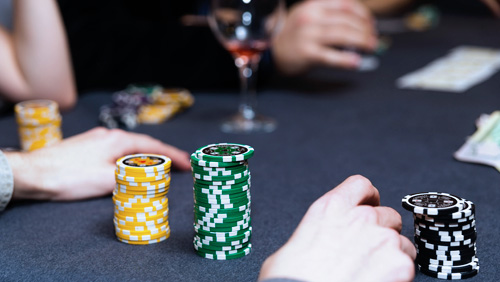Was the decision to ban the professional poker players from the One Drop a success? Lee Davy takes a look at the decision to change the entry rules of the most expensive buy-in poker tournament in the world to see if it was the right play.
 The world of poker reached a new level of insanity when in 2012 the Cirque du Soleil founder, Guy Laliberte, convinced the powers to be at the World Series of Poker (WSOP) that 48 people would pay €1m to compete in a poker tournament, as well as donating €111,111 to the One Drop Foundation.
The world of poker reached a new level of insanity when in 2012 the Cirque du Soleil founder, Guy Laliberte, convinced the powers to be at the World Series of Poker (WSOP) that 48 people would pay €1m to compete in a poker tournament, as well as donating €111,111 to the One Drop Foundation.
I have spoken to Seth Palansky about the meetings leading up the decision to give the event the green light several times, and his view is always the same.
“I didn’t think we would fill one table.”
They did better than that when they created a 48-player cap on the event and met it with ease. Antonio Esfandiari, one of the most accomplished players in the game, won the first prize of $18m+.
Two years later, they went for it again. As you would expect, the excitement waned slightly from the first event, and 42 players ponied up a million bucks with Daniel Colman, one of the most accomplished players in the world, winning the $15m+ first prize without even breaking into a smile.
There was a pattern emerging.
The One Drop was looking like a biennial event, and the pattern was followed earlier this year when Laliberte announced plans for the WSOP to host a third One Drop event. Only this time things were a little different. The players who make a living from the game of poker were not able to play, and the salubrious surroundings of Monte Carlo would be the new location.
It was a decision that created a lot of questions with the main one being:
Would it be a success?
‘Professional’ is The Wrong Word
Professional poker players believe they have a BIG say in tournament structures because the prize money comes out of their vaults. The word on the street is that most of the non-professional poker players competing in the One Drop were putting up most of the money, including staking the professionals, and hence they deserved a say in the running of the tournament.
The word on the grapevine was a lot of the non-professional players didn’t enjoy competing against some of the professionals. It seemed the pros demeanour was the main bone of contention, but I am sure the gap in skill level was another critical factor.
I don’t confess to know the difference between a good poker player and a bad one. Many times I have lauded praise on a player because of his or her results only for a pro to tell me they are crap. So I don’t think the problem is with pros, per se, the problem is with people who take the game too seriously and who are too skilful.
But, who doesn’t take a $1m buy-in event seriously?
Dan Shak was wearing headphones for christ sakes.
And would you call Dan Shak, Tony Bloom, James Bord, Andrew Pantling, Talal Shakerchi, Voulgaris Haralabos and Mark Teltscher players who are too good to be competing with people who run a beverage firm by day and play poker as a hobby at night?
I wouldn’t want to play with them.
Most of the players had professional coaches. Talal Shakerchi didn’t have one because he believes he doesn’t need one.
Was it a Success?
Ask Guy Laliberte, but how can you not say that raising €3.1m for any charity is NOT a success?
But I guess it depends on the metric. I assume Laliberte didn’t invent the One Drop so the mega rich could compete for a million bucks, after all, they can just turn up at each other’s yachts with corned beef pie, Babycham, and a milly.
So, you have to assume the metric is money raised for charity, and if that’s true, then the decision to turn away the pros was a mistake. In 2012, the event raised $5.2m. In 2014, it raised $4.6m. Without the pros, it raised $3.1m. We are not talking chump change here. They lost the opportunity to earn millions of dollars more, and that would have affected the suffering of thousands of people.
There was a view that should the non-professionals get into more of the winning positions then they would do a David Einhorn and donate even more to charity. But take a look at the winners and tell me how many of them do you think gave more than the $111,111?
1. Elton Tsang – €11,111,111
2. Anatoly Gurtovoy – €5,427,781
3. Rick Salomon – €3,000,000
4. James Bord – €2,100,000
5. Cary Katz – €1,750,000
6. Andrew Pantling – €1,500,000
Andrew Pantling didn’t even make a profit because he fired two bullets, so I doubt him, or his backer was particularly keen to hand over a cent of the €1.5m.
The Future?
The decision to separate it from the WSOP was a good one. The decision to ban the players was not. I would stick with Monte Carlo as the location, and go back to making it an open event. If you want to balance the skill level, then create a €1m buy-in cash game and ban the pros, but keep the One Drop open to everyone, and help reduce more suffering in the world.
By the way, Paul Phua won the €100,000 Re-entry event for €752,700. Only 12 players entered, and amongst them were the pros Tom Marchese, Andrew Robl, and Mustapha Kanit.